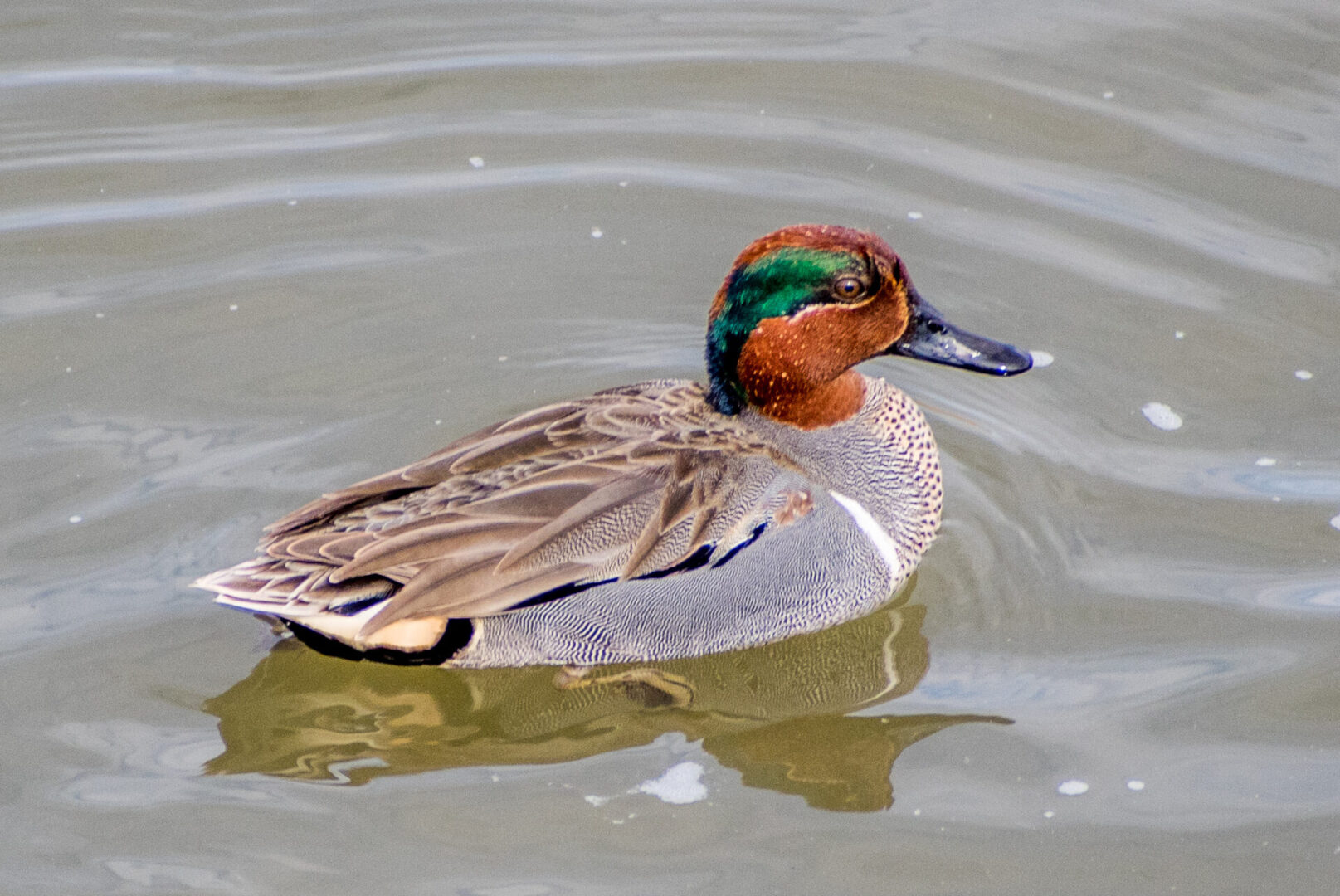The Green-winged Teal

A WHISTLING DUCK… IN WETLANDS PARK? NO KIDDING!!!
Toot! Toot-toot, toot! If you hear that distinctive whistle, especially around shallow wetlands (like those found in Clark County Wetlands Park) you’re likely hearing a breeding male green-winged teal (Anas carolinensis). The males don’t “quack” like most ducks, but unless you hear—and see—them, they can be mistaken for their larger “cousin,” the cinnamon teal (Anas cyanoptera).
The real giveaway to identifying male green-winged teals is around their eyes. Breeding males have a chestnut head with a green streak behind the eye and a vertical white stripe on the side. That green wing patch is called a wing speculum from which their common name is derived. The female green-winged teals are often hard to ID, too. With brown plumage much like female mallard ducks,females are smaller, but have a unique yellowish streak along the tail. They also have a thin brown line running the length of their head through their eye Both sexes have green wing patches in their secondary feathers, but these may be hidden when not in flight.
Green-winged teal are “puddle” or dabbling ducks that feed on vegetation by tipping up in shallow water or by picking at food items while standing in puddles, flooded fields, and margins of wetlands. They generally only submerge themselves to escape predators, including coyotes and foxes. They have closely spaced, comb-like projections called lamellae around the inner edge of the bill. The teal use them to filter tiny invertebrates from the water, allowing the birds to capture smaller food items than other dabbling ducks. They are not picky about what they eat and will consume a wide variety of aquatic plants and animals including seeds, grasses, aquatic insects, tadpoles, and crayfish. These ducks are the smallest “dabblers” in North America.
Green-winged teal are considered resident to medium-distance migrant birds in North America via all major flyways—Pacific, Central, Mississippi, and Atlantic—reaching wintering grounds from coastal British Columbia to as far south as Central America. Thousands can be seen moving through Nevada in late summer. Teal sometimes switch wintering sites from year to year. One banding study found that individuals wintering in Texas one year went as far away as California in subsequent years. This lack of philopatry, or “faithfulness” to a particular site, may reflect the tendency of males that did not breed the year before to try to find mates among a different set of wintering females.
Pairs usually arrive already mated when they reach their breeding grounds. In one courtship display, the male rears up out of water, arching his head forward and downward to shake his bill very rapidly in water while giving a sharp whistle. Females choose their nest sites, usually in a protected area on the ground, but always close to water. They build their nests and lay between six and nine eggs, incubating them with no assistance from their mate. A couple of hours after they hatch, the ducklings are mobile, able to swim, and follow the female around for food. The young fledge at about 35 days.
Having participated in several annual winter bird counts at the Park over the years, I was always quite surprised when more a proficient birder would call out “green-wings” among a pack of otherwise cinnamon/brown-colored birds. Now having done this research, it’s good to finally know the difference!
– By Constance Carlson; photo by Don Gibe
Please enjoy this YouTube video:
Green winged teal duck call sound, flying
